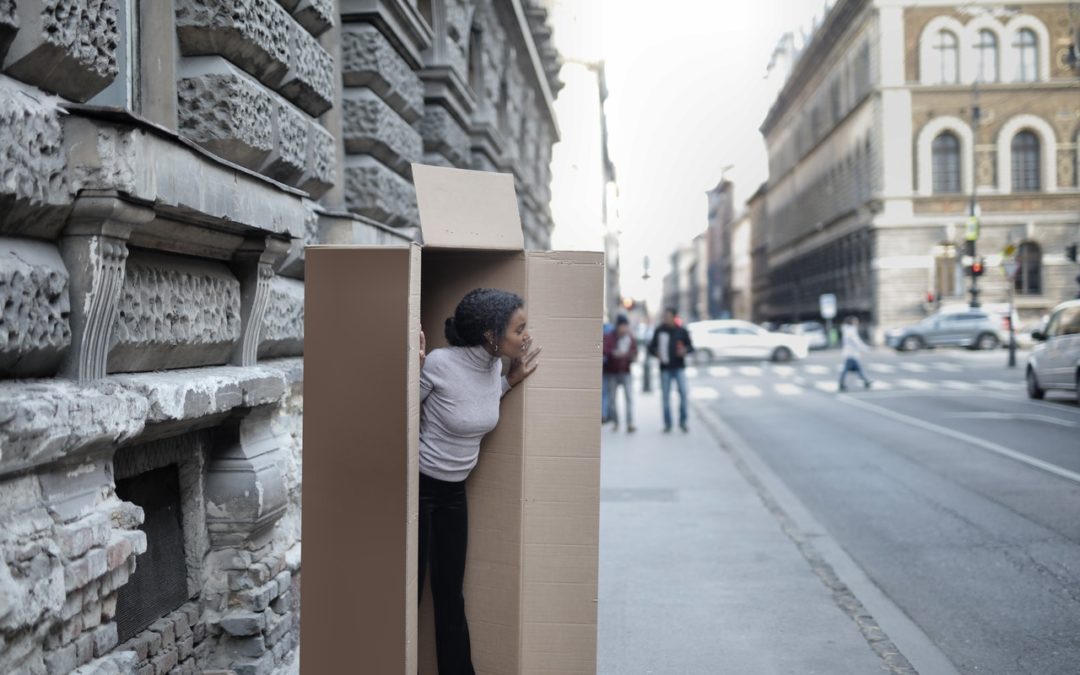Techniques for introverts or extroverts to reduce social anxiety and depression.
Originally published February 15, 2021 on psychologytoday.com
The impact of the pandemic and the looming stages of re-entry has soared in the number of people who are experiencing heightened levels of social anxiety and social depression. The U.S. Census Bureau and the National Center for Health Statistics data show that over 4 in 10 U.S. adults had developed symptoms of depression or anxiety by the end of 2020. Over the past year, I’ve seen how the levels of anxiety and depression among my clients are more challenging depending on their personality type.
The most studied and researched personality types are introverts and extroverts. Carl Gustav Jung, a Swiss psychiatrist and psychoanalyst who founded analytical psychology, popularized the concept of introverts and extroverts in the 1900s. He noted extroverts are outgoing and talkative, while introverts are quieter and more self-reflective. Unsurprisingly, extroverts prefer social settings and introverts prefer solitary activities. Naturally, the pandemic would play to the tendencies of an introvert and be devastating to an extrovert.
However, these traits are on a continuum, and many introverts have learned over time to use their “extrovert” muscle and behave in an outgoing manner frequently enough to confuse people around them into believing they are extroverts. A survey conducted by the Myers-Briggs organization in 1998 showed introverts made up 50.7 percent and extroverts 49.3 percent of the United States general population. A later study by the American Trends Panel (2014) revealed 77 percent of respondents described themselves as falling somewhere between, with 12 percent being introverts and 5 percent, extroverts, and 6 percent unsure.
There is also a sub-category I call “extroverted-introverts.” Although they exhibit extroverted characteristics, typically, they require substantial solitary recovery time between social experiences. The pandemic has resulted in the atrophy of the extrovert muscle in these “extroverted-introverts” allowing them to fall into a comfortable pattern of introversion. I believe this has contributed significantly to the increase in their social anxiety and social depression and will continue to be challenging until successful re-entry occurs.
Whether you consider yourself to be an introvert, an extrovert, a combination of both, or neither, here are five tips to help lessen the resulting symptoms of social anxiety and depression:
1. Use desensitization.
Desensitization involves repeatedly engaging in an activity to decrease your negative emotional response to it. Learning how to use this strategy regularly will build up your confidence in engaging in social interactions. Start in small increments. Consider the time you take part in an activity, the number of people, and with whom you engage (intimate family members, friends, or acquaintances). As you feel more confident, incrementally challenge yourself to expand on these interactions.
2. Don’t apply pressure on yourself.
Extroverts who push themselves to do social activities before they’re ready will trigger an anxiety reaction. Be strong in your commitment to move through re-entry at a pace that is comfortable for you. It’s not a race. Don’t give in to external pressure; it will increase anxiety and ultimately slow you down. Move at a pace that is authentic to your needs.
3. Schedule downtime.
Introverts need downtime. Unfortunately, even the increased social isolation the pandemic caused won’t permanently satiate the desire for alone time or solitariness. Give your brain the recovery time from social interactions it needs without recriminations.
4. It’s OK if it feels forced.
Research shows introverts take their cues from extroverts and then try to push themselves to be extroverted until it feels more natural. When introverts isolate indefinitely, they lack the time to continue to practice these skills, so initially, they’re rusty. Feeling awkward at the outset is alright. The muscle memory will return, and it will feel easier over time if you exercise patience.
5. Practice mindfulness.
Focus on developing daily check-ins with your body’s cues. Practicing mindfulness will enable you to recognize the right time to exit a social situation before your anxiety is too peaked. Your body will give physiological cues of distress: increased heart rate, etc. When your body gives you these cues, don’t ignore them. Figure out graceful strategies to exit social situations in advance. Once you exit, use guided meditation or relaxation strategies to calm yourself down.
Remember, every effective psychological strategy requires consistency, practice, and patience. Respond to your own personal truths and don’t bend to external social pressures. You will ultimately experience a higher degree of social success and more life satisfaction.
References
“Impact Of COVID-19 Pandemic On Mental Health, Pandemic Causes Spike in Anxiety & Depression,” www.statista.com, by Felix Richter, January 18, 2021
“Introvert vs Extrovert: A Look at the Spectrum and Psychology,” www.positivepsychology.com, Elaine Houston, B.Sc.,
February 2, 2021
“Quiet: The Power of Introverts in a World That Can’t Stop Talking,” by Susan Cain, published by Crown/Archetype,
January 29, 2013
“Quiet: The Power of Introverts in a World That Can’t Stop Talking,” by Susan Cain, published by Crown/Archetype (January 29, 2013)
“The Secret Power of Introverts,” Forbes, by Jenna Goudreau, January 26, 2012.
“Expressive control, expressive consistency, and the correspondence between expressive behavior and personality,”
The Journal of Personality/www.wileyonlinelibrary.com, by Dr. Richard A. Lippa, September 1978
